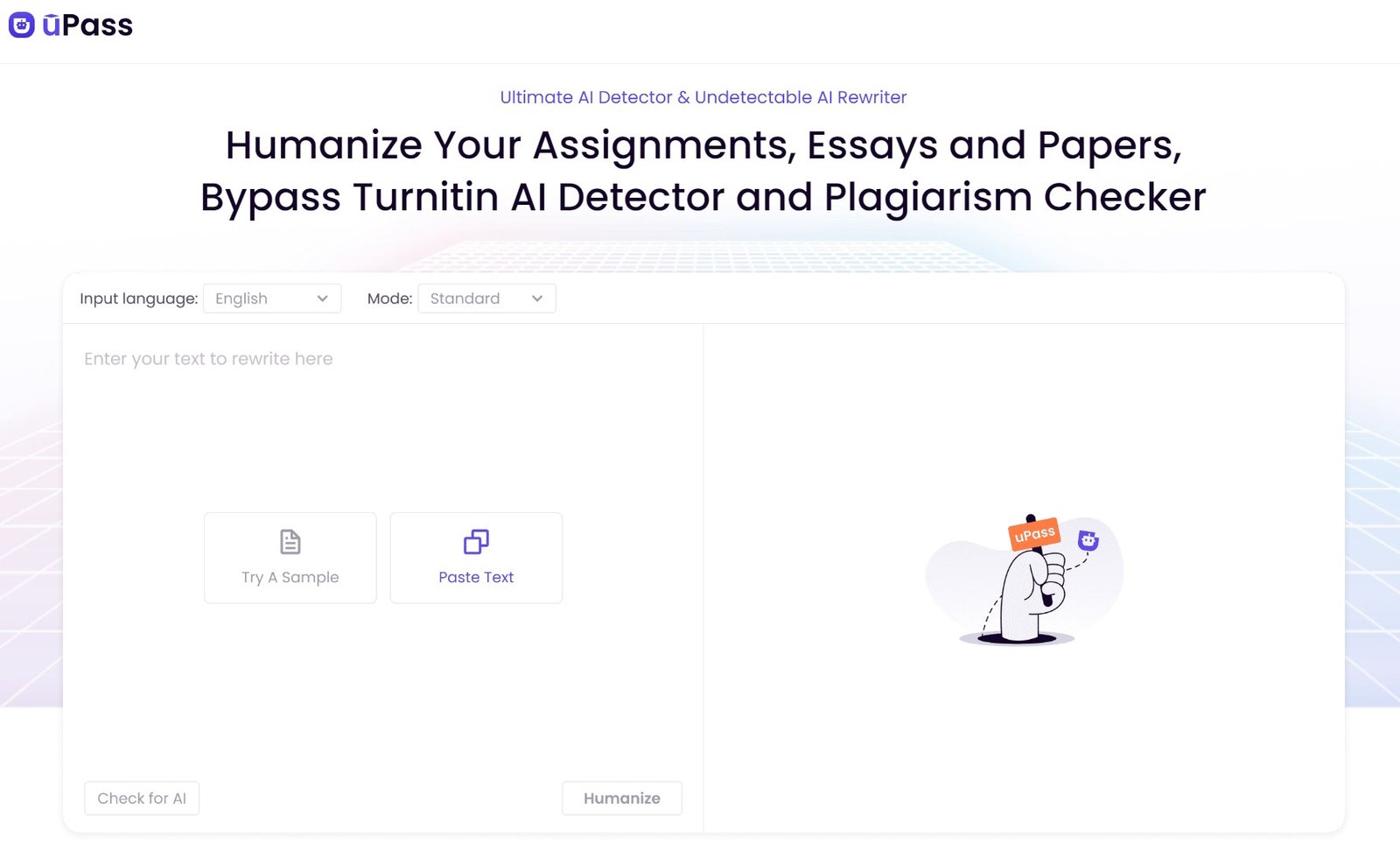In the rapidly evolving landscape where technology intertwines with academia, the emergence of artificial intelligence (AI) has brought forward both challenges and solutions. uPass emerges as a response to this dynamic, providing tools that cater to students, educators, and content creators who seek to maintain integrity while navigating AI detection mechanisms. This review delves into the capabilities of uPass as both an AI detector and an undetectable AI rewriter, evaluating its utility in bypassing AI detectors including the widely used Turnitin.

Understanding uPass: An Overview
At the heart of uPass lies its dual functionality: it is an AI Detector capable of recognizing text generated by AI, and simultaneously, it serves as an Undetectable AI Rewriter. This double-edged sword provides a comprehensive solution for those grappling with the challenge of ensuring their work is perceived as authentic and human-written, despite the initial assistance from AI tools.
The AI Detection Challenge
With institutions and corporations increasingly relying on AI detectors to differentiate between human and AI-generated content, the demand for tools that can bypass these AI detectors without compromising on integrity or authenticity has skyrocketed. uPass claims to address this need by offering a service that not only detects AI-generated text but also rewrites it in a manner undetectable by current technologies.
uPass as an Undetectable AI Rewriter
The cornerstone of uPass’s offering is its ability to take a piece of text and transform it in such a way that it bypasses AI detection mechanisms. This feature is particularly beneficial for students and professionals who utilize AI to aid in drafting essays, reports, and papers but need the final output to be undetectable by AI checking tools like Turnitin.
Features and Functionalities
Bypass AI Detection
uPass’s central promise is to bypass AI detection with a high degree of reliability. Through its undetectable AI rewriter technology, uPass can take any text generated with AI assistance and rephrase it to achieve human-like quality that bypasses AI detectors with a claimed effectiveness of over 90%.
Comprehensive AI Detector
Besides rewriting, uPass serves as an AI detector, offering users the ability to check their text against multiple AI detection algorithms. This feature aims to provide a holistic view of how various detectors would interpret the text, offering peace of mind or areas for improvement before final submission.
Plagiarism-Free Outputs
Another significant aspect of uPass is its guarantee of plagiarism-free outputs. By generating unique ways of expressing the same ideas, uPass helps users avoid the pitfalls of duplicate content, ensuring their work passes through plagiarism checks such as those conducted by Turnitin, Grammarly, and others.

Practical Applications
Bypassing Turnitin’s Scrutiny
Turnitin, known for its rigorous checking mechanisms, often poses a significant challenge for students and professionals alike. uPass’s undetectable AI rewriter tool claims to bypass Turnitin’s AI detector and plagiarism checker efficiently, making it a potentially valuable tool for those concerned about these checks.
Versatility Across Academic Disciplines
uPass is not limited to any specific field or discipline. Whether it’s literature, history, computer science, or philosophy, uPass assures that it can adapt the text to fit the context and content requirements of various academic fields without distorting the original meaning.
Ethical Considerations
While uPass presents itself as a solution to a growing need among students and professionals to leverage AI assistance responsibly, it also raises ethical questions. The line between using AI as a tool and relying on it to bypass detection mechanisms entirely is delicate. uPass encourages its users to adhere to integrity policies, suggesting that the ultimate responsibility lies with the individual to use the tool wisely and ethically.
User Experience and Feedback
Feedback from users, such as students across various disciplines, attests to uPass’s effectiveness and reliability. Users commend its ease of use and the assurance it provides, knowing their work will meet the stringent criteria set by academic institutions and content platforms against AI-generated text.
Conclusion
In an age where AI’s role in education and content creation is both a boon and a bane, uPass offers a nuanced solution. With features designed to bypass AI detection while ensuring outputs remain plagiarism-free and maintain human-like quality, it caters to a pressing need. However, the ethical onus it places on users to navigate this technology responsibly is a reminder of the complex interplay between innovation and integrity in the digital age. As AI continues to advance, tools like uPass highlight the ongoing need for dialogue and development around ethical AI use and detection.







